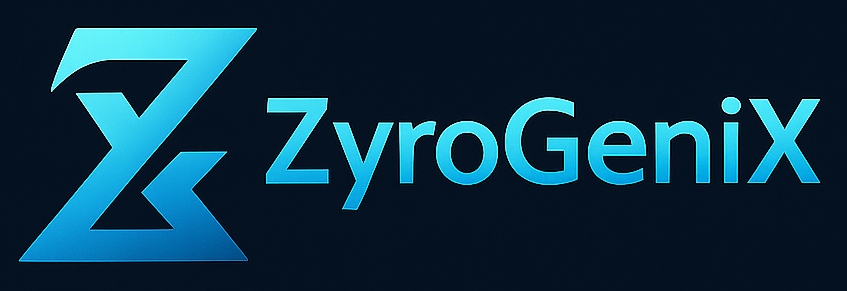Input
Drug compounds and target specifications are fed into our AI simulation platform.

The ZyroGeniX Project aims to digitize drug testing, discovery, and development via AI aided simulations.
Drug development is a high-risk, high-cost process with extremely low success rates. Traditional methods rely on expensive in silico, in vitro, and in vivo trials that often fail late in the process, wasting billions in R&D investment.
🧬 In Silico Structure Problems: Conventional simulations rely on static modeling that doesn't capture dynamic cellular interactions. They focus narrowly on single targets rather than systemic effects, and struggle with poor generalization when encountering novel compounds outside their training data.
🔬 In Vivo & In Vitro Limitations: Traditional cell lines lack the genetic diversity found in human populations, while simplified 2D cell cultures fail to replicate complex 3D tissue environments. Most critically, animal models fail to predict human responses in approximately 90% of cases, creating a significant translational gap.
Make the go to market process for drugs more cost and resource effective. Between designing a drug and the drug making it to the market they undergo extensive testing process costing on magnitude of billions.
🎯 Our AI Solution: We create virtual cell populations that simulate diverse genetic backgrounds and metabolic variations. Our dynamic modeling captures real-time cellular responses and drug interactions, enabling superior generalization and better predictions for new, unseen substances.
Drug compounds and target specifications are fed into our AI simulation platform.
Virtual cell populations simulate drug interactions with diverse genetic backgrounds.
Predictive insights on efficacy, safety, and potential failure points before physical trials.
AI drug discovery is the application of artificial intelligence and machine learning to accelerate pharmaceutical research and development. ZyroGeniX specifically focuses on virtual cell population simulation, which creates digital models of human cells to predict how potential drugs will behave in the human body.
Traditional drug development costs $2.6 billion on average per approved drug. ZyroGeniX's AI platform can reduce these costs by $1-2.6B per candidate through early failure detection and virtual screening. By identifying potential failures before expensive clinical trials, we help pharmaceutical companies avoid costly late-stage failures.
Our virtual cell populations simulate diverse genetic backgrounds and metabolic variations found in real human populations. Unlike traditional 2D cell cultures, our 3D simulations capture complex tissue environments and dynamic cellular interactions, providing more accurate predictions of drug efficacy and safety.
The pharmaceutical industry faces unprecedented challenges: rising R&D costs, declining success rates, and increasing regulatory requirements. ZyroGeniX addresses these challenges through AI-powered simulation technology that provides pharmaceutical companies with better decision-making tools for drug development.
AI-powered drug discovery represents the next evolution in pharmaceutical research. By combining machine learning with biological simulation, companies can test thousands of compounds virtually before investing in expensive physical trials. This approach not only reduces costs but also increases the likelihood of success by identifying promising candidates earlier in the development process.
AI drug discovery uses artificial intelligence and machine learning to accelerate pharmaceutical research. ZyroGeniX specifically employs virtual cell population simulation, creating digital models of human cells to predict drug behavior. This approach allows us to test thousands of compounds virtually before expensive physical trials, significantly reducing development time and costs.
ZyroGeniX's AI platform can reduce drug development costs by $1-2.6B per candidate. Traditional drug development costs $2.6 billion on average per approved drug, with most costs incurred during late-stage clinical trials. Our early failure detection helps pharmaceutical companies avoid these expensive failures by identifying problematic compounds before physical trials begin.
Virtual cell populations are digital simulations of human cells that capture diverse genetic backgrounds and metabolic variations found in real populations. Unlike traditional 2D cell cultures, our 3D simulations replicate complex tissue environments and dynamic cellular interactions. This provides more accurate predictions of drug efficacy and safety, addressing the genetic diversity limitations of current preclinical models.
Traditional drug development has only a 4.7% success rate from initial design to FDA approval. This means that out of 100 drug candidates that enter development, only about 5 will reach the market. Most failures occur in late-stage clinical trials, after significant investment has already been made. AI-powered approaches aim to improve this success rate through better early-stage prediction.
Traditional in silico methods rely on static modeling that doesn't capture dynamic cellular interactions. They focus narrowly on single targets rather than systemic effects. ZyroGeniX's AI creates dynamic virtual cell populations that simulate real-time cellular responses and drug interactions, enabling superior generalization and better predictions for new, unseen compounds outside their training data.
Current drug development faces several critical challenges: (1) Traditional cell lines lack genetic diversity found in human populations, (2) Simplified 2D cell cultures fail to replicate complex 3D tissue environments, (3) Animal models fail to predict human responses in approximately 90% of cases, (4) Conventional simulations rely on static modeling that doesn't capture dynamic interactions, and (5) High costs and long timelines (6-10 years, $2.6B average cost).
Pharmaceutical companies can benefit from AI drug discovery in several ways: (1) Reduced R&D costs by $1-2.6B per candidate, (2) Accelerated development timelines through early failure detection, (3) Improved success rates by identifying promising candidates earlier, (4) Better resource allocation by prioritizing compounds before expensive development, (5) Enhanced decision-making through predictive insights on efficacy and safety.
AI represents the next evolution in pharmaceutical research, combining machine learning with biological simulation to revolutionize drug discovery. The future includes: virtual clinical trials, personalized medicine through genetic simulation, real-time drug optimization, and predictive modeling for regulatory approval. Companies that adopt AI early will gain significant competitive advantages in cost, speed, and success rates.
Subscribe to our newsletter to stay up to date with ZyroGeniX!